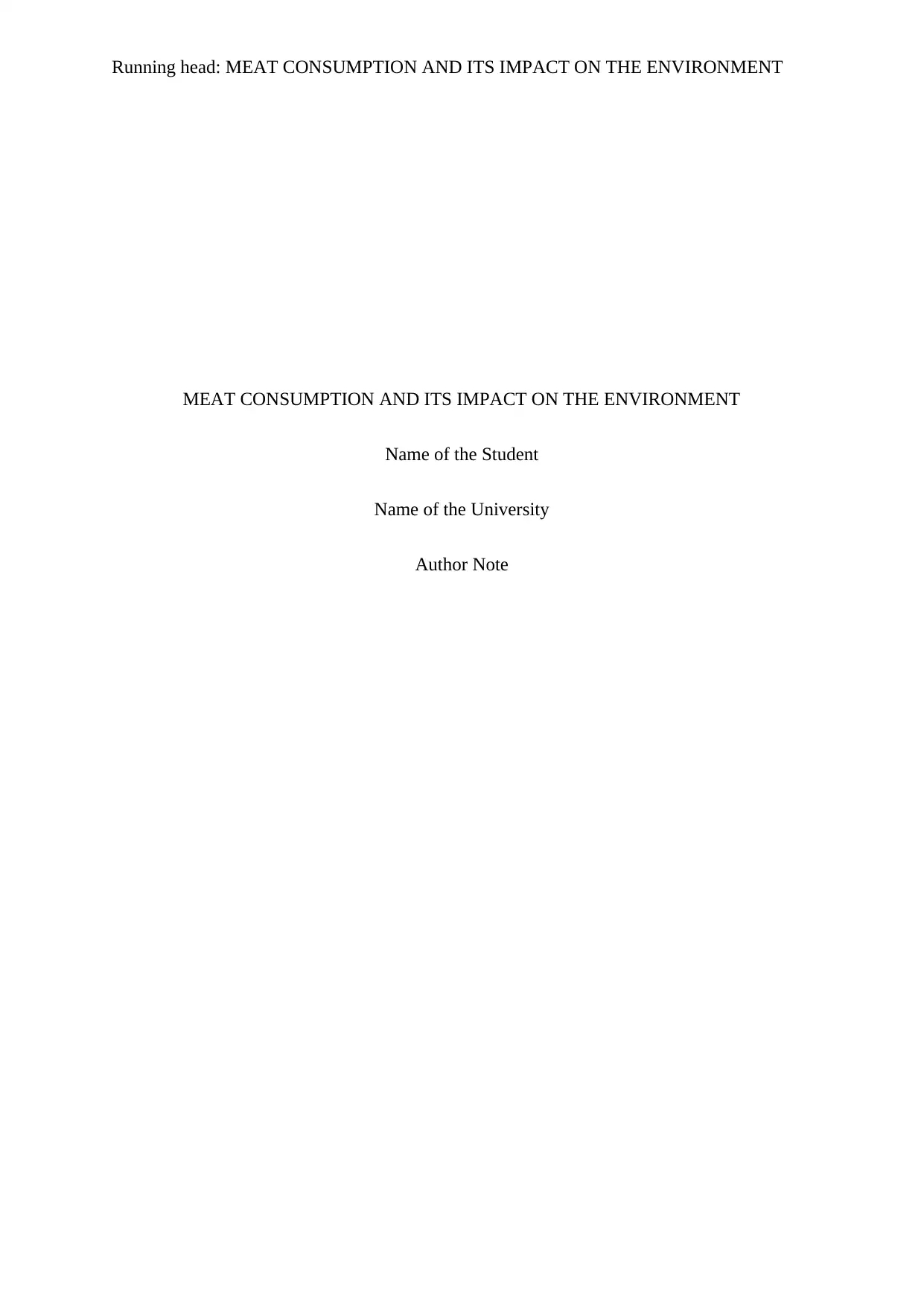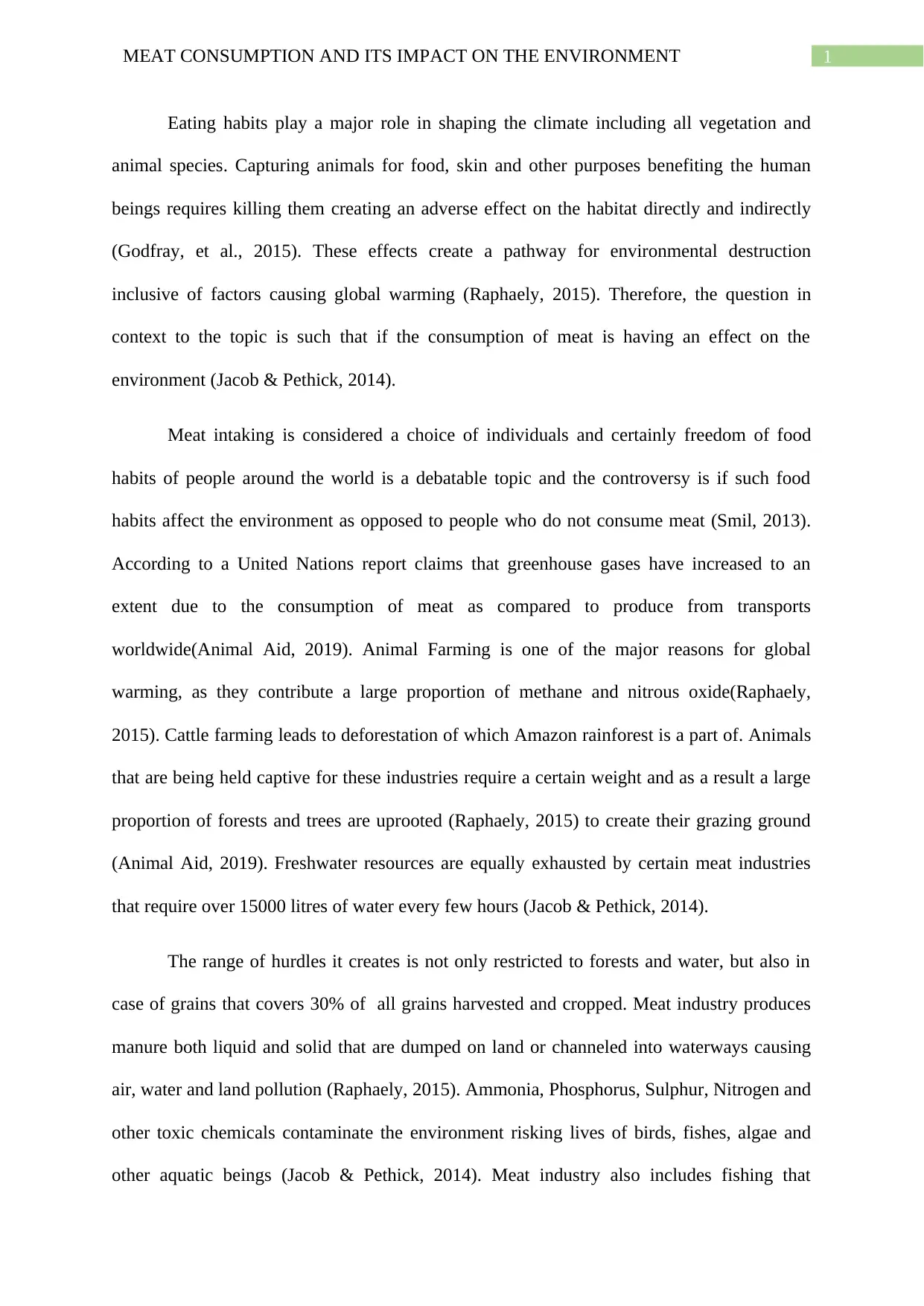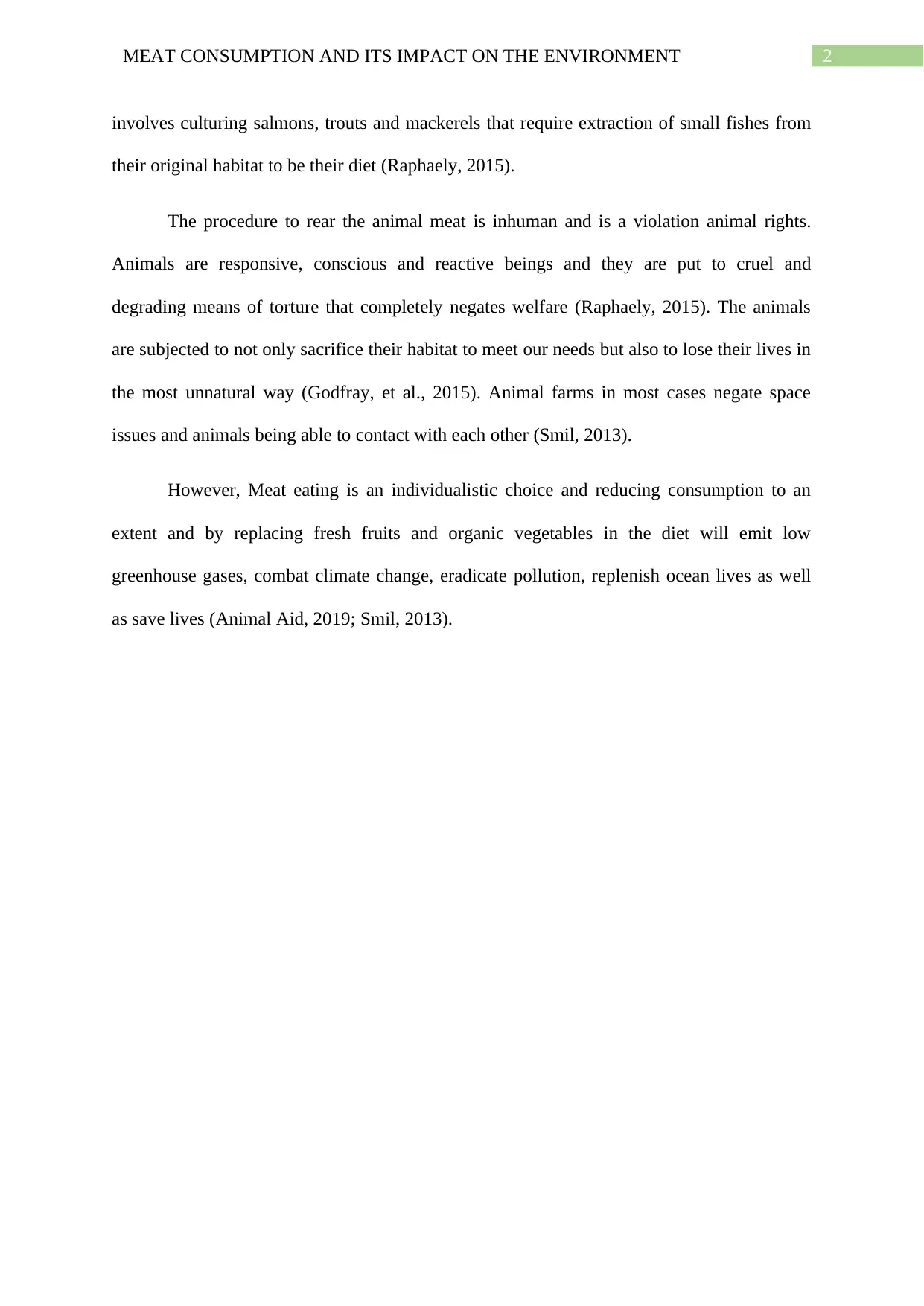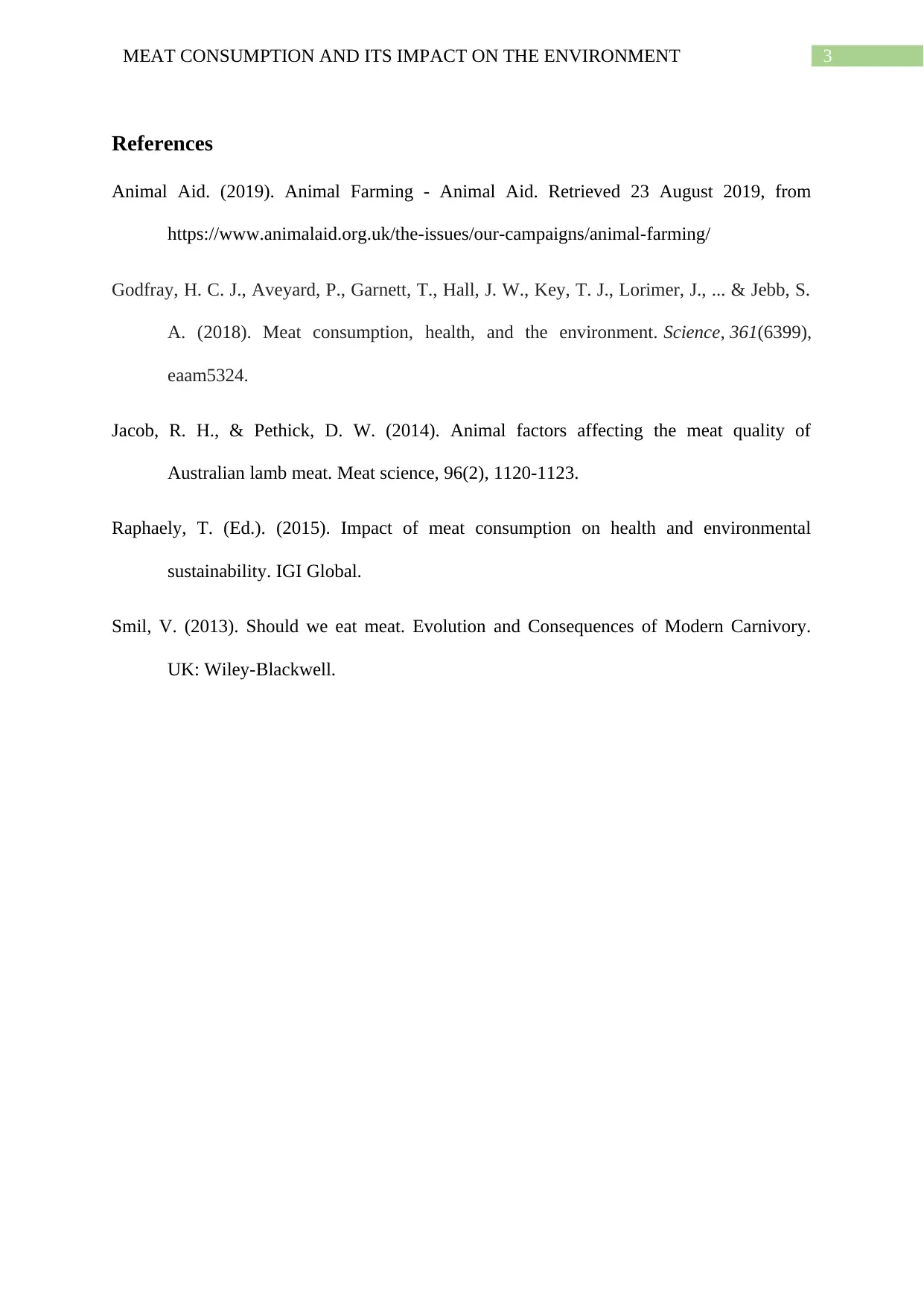Comprehensive Report: Environmental Consequences of Meat Consumption
VerifiedAdded on 2022/09/17
|4
|799
|22
Report
AI Summary
This report investigates the significant environmental consequences of meat consumption and animal farming. It highlights how the practice contributes to climate change, citing the release of greenhouse gases such as methane and nitrous oxide, which are more potent than carbon dioxide. The report also details the role of animal agriculture in deforestation, particularly the destruction of rainforests for grazing land and feed production. Furthermore, it addresses the pollution caused by meat industries, including the contamination of water and land by manure and toxic chemicals, as well as the depletion of freshwater resources. The report emphasizes the ethical dimensions of meat production, focusing on animal welfare issues and the inhumane treatment of animals. It concludes by suggesting that reducing meat consumption and adopting a diet rich in fruits and vegetables could mitigate these environmental impacts, combat climate change, and improve animal welfare.
1 out of 4











![[object Object]](/_next/static/media/star-bottom.7253800d.svg)